Making sense of climate change
Stephen Scoffham and Steve Rawlinson consider ways of teaching climate change which go beyond the science and enhance consistent understanding.
Misconceptions
Children have lots of misconceptions about climate change. ‘It is something in Antarctica’ said one Year Five child when he was asked what he thought it meant. ‘The Earth gets really hot and starts to crack,’ said another. ‘It’s when you don’t close the door and all the hot air goes out,’ declared a third. In just one group of nine-year-olds, pupils’ perceptions of climate change ranged from balanced scientific explanations to egocentric accounts and apocalyptic fears. The child who talked about the Earth ‘blowing up in about 30 years’ was working in the same class as the pupil who talked about how pollution creates too much carbon dioxide which then heats the atmosphere ‘like a blanket’. Some pupils displayed considerable knowledge, but the majority exhibited a mixture of confusion, anxiety, and ignorance. A group of adults might quite possibly exhibit a similar range of responses.
Starting with the science
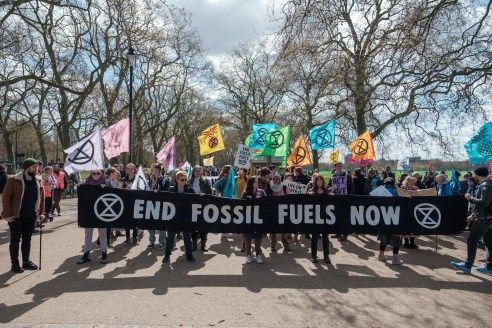
Getting to grips with the science is one way to begin. Global warming was first identified by Joseph Fourier in the 1820s who calculated that the atmosphere was keeping the Earth surprisingly warm. Some forty years later John Tyndall discovered that even small quantities of some gases are capable of absorbing large amounts of radiant heat. We now know that global warming is caused by a mixture of carbon dioxide, nitrous oxide, methane, and other gases which trap heat from the Sun and stop it radiating back into space. And despite decades of intensive lobbying from the coal, gas, and oil industries, it has been established beyond all reasonable doubt that pollution from fossil fuels is the main cause of the rise in global temperatures over the last few centuries.
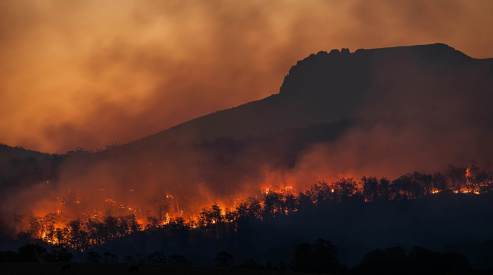
A key issue for the future is whether it will be possible to keep global temperature rise within the 1.5 degree ceiling agreed at the Paris Agreement in 2015. The danger is that an ever-warmer world is likely to trigger feedback loops that will cause even further warming. For example, forest fires not only pollute the atmosphere but also reduce tree cover and the ability of the forests to act as a carbon sinks. Elsewhere in the world, as the arctic permafrost begins to melt it releases methane which is itself a powerful greenhouse gas. Up till now the effects of global warming have been masked by negative feedback loops but scientists warn that at some unspecified point these will turn positive, triggering irreversible runaway effects. This may even have started to happen.
10 years to transform the future of humanity — or destabilize the planet | Johan Rockström
Teaching without scaring
The science of global warming is one starting point, but for educationalists, a key challenge is to find ways of teaching children about climate change without frightening them or leading to a sense of helplessness, denial, or despair. Simply presenting the facts on their own is liable to be counterproductive but trying to conceal or ignore the dangers that lie ahead is neither desirable nor practical. We need to be truthful about what is happening without provoking eco-anxiety. This is a delicate balancing act for which teachers usually have little or no training. And whilst there are lots of resources about climate change, there is much less guidance on how to teach it in a spirit of optimism and hope.
Different starting points: environmental empathy and engagement
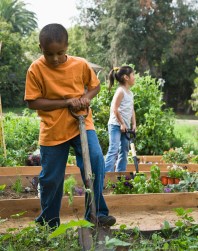 How can teachers handle this dilemma? One approach is to take a different starting point so that when children learn about the science of climate change, they approach it from a position of strength. For instance, immersing children in the natural world through outdoor learning as pioneered by Forest Schools is an effective way to build their empathy for the environment.
How can teachers handle this dilemma? One approach is to take a different starting point so that when children learn about the science of climate change, they approach it from a position of strength. For instance, immersing children in the natural world through outdoor learning as pioneered by Forest Schools is an effective way to build their empathy for the environment.
Similarly, children who are engaged with a school garden or community project benefit from taking positive action (often with people of different generations) to care for and improve and improve their surroundings. Both these approaches build children’s sense of belonging and identity. They also tap into the innate tendency for humans to seek connections with nature and other forms of life.
This is encapsulated in the notion of biophilia which was popularised by EO Wilson (1986) and the traditional wisdom of indigenous peoples. As Tim Frandy from the North American Sami community put it, ‘the forest and waters are how we think, how we communicate and who we are.’
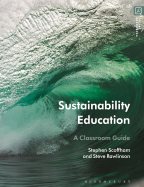 Critical and creative engagement also matters. In our recent book, Sustainability Education: A Classroom Guide, there are suggestions for a range of classroom activities such as an activity where pupils write ‘letters to Earth’ expressing their gratitude for what it has provided and regret for what has been done to it. There is a case study of a school where pupils on the eco committee, angry that their local authority had refused to declare a climate emergency, devised and implemented a motion of their own. We also highlight a school where the United Nations Sustainable Development Goals (SDGs) are used to frame moral questions in every area of the curriculum. Despite their weaknesses the SDGs are an excellent way of showing how climate change links to other social and environmental problems. Click on the book cover to follow the link to Amazon.
Critical and creative engagement also matters. In our recent book, Sustainability Education: A Classroom Guide, there are suggestions for a range of classroom activities such as an activity where pupils write ‘letters to Earth’ expressing their gratitude for what it has provided and regret for what has been done to it. There is a case study of a school where pupils on the eco committee, angry that their local authority had refused to declare a climate emergency, devised and implemented a motion of their own. We also highlight a school where the United Nations Sustainable Development Goals (SDGs) are used to frame moral questions in every area of the curriculum. Despite their weaknesses the SDGs are an excellent way of showing how climate change links to other social and environmental problems. Click on the book cover to follow the link to Amazon.
Emotional and spiritual awareness
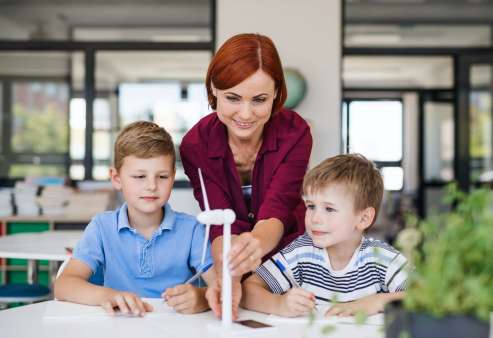
Understanding the science of climate change matters, but emotional and spiritual awareness needs to be developed alongside cognitive learning. This overlaps with pedagogy. Climate change education does not have to be presented as a desperate race against time or a fearful encounter with unpalatable truths. Instead, it can be seen as a challenge to be explored and addressed locally through discussion and individual and collective action. Whilst this will have minimal impact on global trends it is important for our personal integrity and sense of self-worth. It also raises questions about meaning and purpose – about what we think really matters and the purpose of education. Without vision, hope and imagination, education is fatally flawed. Rather than simply searching for technocratic fixes, we need to approach climate change in ways that help pupils come to terms with this existential crisis.
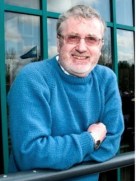 Dr Stephen Scoffham is a Visiting Reader in Sustainability and Education at Canterbury Christ University, UK and was Geographical Association President (2018-19).
Dr Stephen Scoffham is a Visiting Reader in Sustainability and Education at Canterbury Christ University, UK and was Geographical Association President (2018-19).
An established educational author and atlas consultant, Stephen has written widely on primary geography, global learning and environmental education.
 Steve Rawlinson has over two decades of experience as a Principal Lecturer in Geography Education at Northumbria University and was Geographical Association President (2015-16).
Steve Rawlinson has over two decades of experience as a Principal Lecturer in Geography Education at Northumbria University and was Geographical Association President (2015-16).
One of the convenors of the annual Charney Manor Primary Geography Research Conference, since 2009 Steve has also chaired the Editorial Board producing the journal Primary Geography for the Geographical Association.
FEATURE IMAGE: by Mika Baumeister on Unsplash
Support Images: by Ehimetalor Akhere Unuabona on Unsplash, Matt Palmer on Unsplash & Unsplash+ In collaboration with Getty Images
References
Scoffham, S, and Rawlinson, S. (2022) Sustainability Education: A Classroom Guide, London: Bloomsbury
Wilson, E.O. (1986) Biophilia, Cambridge, MASS: Harvard University Press.
Community garden photos by Paula Owens
This is an artwork installation of a dragon called Spiro based on local archaeological finds which celebrates sense of place.

